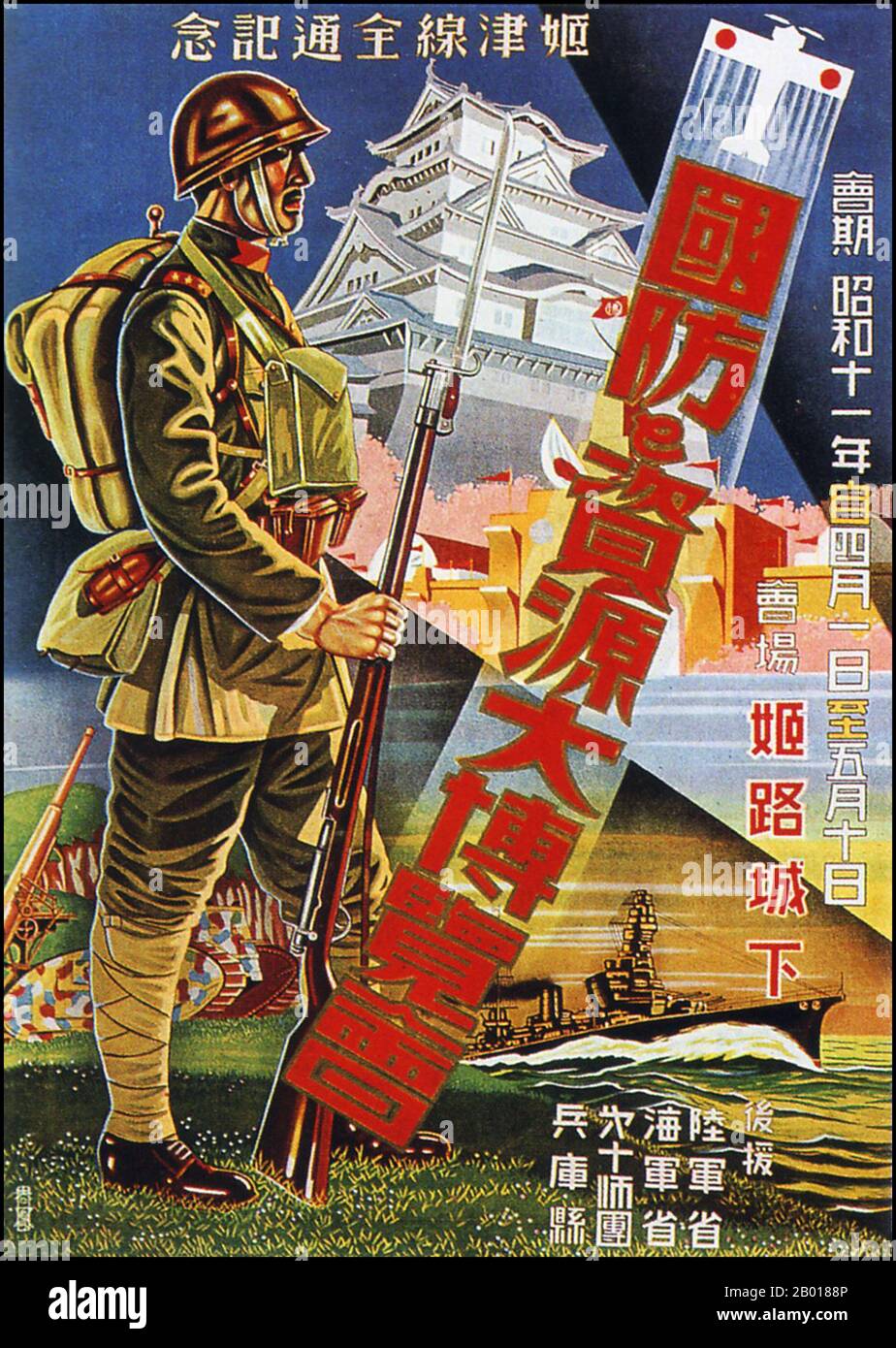Japan: Poster for the National Defense and Resources Exposition, Himeji, 1936. Exposition poster art in Japan between approximately 1925 and 1941 mirrors the rapid militarisation of society and the growth of militarism, statism and fascism during the Showa Era. In the 1920s expo poster art features elements of modern art and even Art Deco. Themes are whimsical and outward looking, representing Japan's growing importance and influence in the world of international commerce and art. By the 1930s this kind of poster art had grown much more bleak and less concerned with human themes.

Image details
Contributor:
CPA Media Pte Ltd / Alamy Stock PhotoImage ID:
2B0188PFile size:
50.1 MB (1.9 MB Compressed download)Releases:
Model - no | Property - noDo I need a release?Dimensions:
3530 x 4965 px | 29.9 x 42 cm | 11.8 x 16.6 inches | 300dpiDate taken:
11 February 2010Photographer:
Pictures From HistoryMore information:
This image could have imperfections as it’s either historical or reportage.
Exposition poster art in Japan between approximately 1925 and 1941 mirrors the rapid militarisation of society and the growth of militarism, statism and fascism during the Showa Era. In the 1920s expo poster art features elements of modern art and even Art Deco. Themes are whimsical and outward looking, representing Japan's growing importance and influence in the world of international commerce and art. By the 1930s this kind of poster art had grown much more bleak, less concerned with human themes and more directed towards statism and social control. Feminine imagery disappears to be replaced by wheels of industry, with distinct similarities to contemporary Nazi art in Fascist Germany. From the outbreak of full scale hostilities with China through to Pearl Harbour and Japan's entry into World War II, ponderous, heavy machinery, marching soldiers, menacing guns and above all bomber aircraft combine to give the posters a crushing, inhuman, Orwellian aspect. This epitomises Japanese fascist art of the Showa Period.